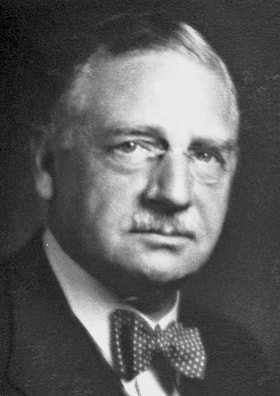History of neuroscience: Otto Loewi

Otto Loewi
Today, the knowledge that neurons communicate with one another using chemicals known as neurotransmitters is a foundational part of our understanding of brain function. We use our awareness of neurochemical transmission to design drugs, investigate the causes of disease, and improve our comprehension of behavior (e.g. through experimental methods like microdialysis). In the first half of the twentieth century, however, the means by which neurons communicated with one another was very unclear, and many within the scientific community were convinced that communication within the nervous system was purely electrical.
The foundation for Loewi's ideas
In the early 1900s, there was a great deal of discussion and experimentation designed to determine how communication across synapses occurred. In 1902, a young German researcher named Otto Loewi took a temporary position in a laboratory at University College London. There Loewi would meet several people who were working on explaining neural transmission. One was Henry Dale, who would later go on to isolate and identify the first neurotransmitter (acetylcholine), and another was Thomas R. Elliot, who was a strong advocate for the idea that the nervous system utilized chemical transmission. It is likely that Loewi's discussions with Elliot first got Loewi thinking about ways to test the chemical transmission hypothesis. It would take almost two decades, however, for Loewi to dream up (literally) a viable experiment with which to do so.
Loewi's dream
According to Loewi's account, one night in 1921 he fell asleep while reading. He then had a dream in which he visualized an experiment that could put an end to the debate over how nerves communicated with one another. He woke up in the middle of the night, scribbled some notes about this potentially groundbreaking experiment, and then fell back to sleep. To his great frustration, however, when he awoke again he couldn't read the notes he had written.
The following night, he woke up at 3am after again dreaming about the experiment. This time he didn't dare risk losing his ideas to illegibility, so he rushed off to the lab to try the experiment. Loewi isolated two beating frog hearts (vertebrate cardiac muscle will continue to contract even after being removed from the body) and filled them with a saline solution. Then, he stimulated the vagus nerve in one of the hearts, a procedure that slows the heart rate. He took the saline solution from the heart whose vagus nerve he had stimulated, and applied it to the second heart. This caused the rate of the second heart to slow down.
Loewi's interpretation of these results was that there was some substance released by the vagus nerve that caused the first heart rate to slow down. The fact that the substance could then be transferred to the second heart via saline solution caused Loewi to be confident the substance was a chemical. Loewi called the putative chemical "vagusstoff" (translated from German as "vagus substance"). It took several more years before the substance was isolated by Dale and named acetylcholine.
Loewi and Dale would share the Nobel Prize in 1936 for demonstrating the importance of chemical transmission in the nervous system, and Loewi's story about the experiment coming to him in a dream would go on to be revered in the history of neuroscience. In truth, Loewi probably didn't conduct the experiment in the early morning hours as he claimed. He was known to be a storyteller with a tendency to sensationalize. According to Dale, Loewi told him he had woken up the second night and simply been fastidious in taking legible notes so he could conduct the experiment the next day. However, Loewi's version of the story is a bit more memorable, and anyone who is engaged in the daily tedium of laboratory research would have a hard time blaming Loewi for wanting to make his discovery just a little more dramatic.
Valenstein, E. (2002). The Discovery of Chemical Neurotransmitters Brain and Cognition, 49 (1), 73-95 DOI: 10.1006/brcg.2001.1487

